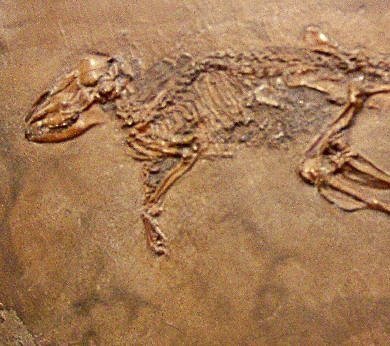
No doubt, right now you are facing a houseful of decorations, wrapping, and other Christmas paraphernalia, trying to encourage yourself to take it all down and put it away. You’ve likely moved furniture around to make room for the Christmas tree, nativity, and other festive décor. Now, it’s time to get back to a bit of normalcy.
(Sigh.)
I get it. It’s waaay more fun to put it all UP! The children are excited about the Christmas season, school is out, and there seems to be much more energy. After the celebrations, everyone is tired from late nights, off-schedules, and probably too much junk food.
But there is a bright side to this project. In our house, we made it a bit of a party…including hot chocolate, fun music, and then popcorn and a movie afterward.
I have another idea to “redeem the time” while you take the Christmas decorations down. Make it educational.
How in the world is this chore educational!?

Well, it is a great visual for how the fossil record on earth came to be. The fossil record represents the total of all the discovered fossils in the world. Now, fossils are the remains of once-living creatures. They are found in a type of rock called sedimentary rock. Sedimentary rock was laid down by water, the sediments (like the soft sand at the bottom of lakes and rivers) settling out after they are stirred up. Well that means fossils were laid down by water, too. When most people think of fossils, the first creatures that come to mind are dinosaurs and other “exciting” organisms. But you need to know that the majority of all the fossils on earth are those of hard-shelled creatures, like clams. And these guys are found in every region of earth, in every layer of the fossil record. That makes sense, because the harder something is, the easier it is to become fossilized. The fun fossils that you always read about in books, such as those of reptiles, birds, plants, and mammals are exceptionally rare to find!
Sedimentary rock is made up of lots of layers, called strata, and we find that the fossils found in each layer tend to be very different from each other. Those hard-shelled clam-like animals are found throughout the layers, but if we don’t consider them, we see the differences. Well, these layers had to be laid down one at a time, the older ones below the younger ones.
Now the big controversy with this is how long it took for each of these layers to form. Some scientists believe it took millions and millions of years for each layer to form, trapping some creatures with it as the sediments buried them. But others (including myself) believe that these layers formed rapidly, due to a major catastrophe. We actually see both of these things happening today. At the mouths of rivers, for example, there is a slow deposition of sediments that the rivers carry as they dump out into oceans. However, we see rapid sedimentary layers form when there are catastrophic events, such as the eruption of Mount St. Helens in Washington. The huge sediments that resulted rapidly settled out, forming a large number of sedimentary layers and trapping any creature in their path.
Now, I am not going to go into which of these ideas is correct (For further reading on this, see the note at the end.), but one feature of the fossil record is agreed upon by everyone. The lower the layers, the older the sediments. The first layer was laid down, trapping some creatures as it settled out. The next layer formed on top of it, trapping other creatures. And so on.
Well, what in the world does this have to do with Christmas decorations?

Image courtesy pixabay
Consider your Christmas tree. What is the first thing you did to decorate it? Most people string lights first. Then they add garland. Finally they put on the ornaments. That is so the ornaments are the most noticeable. Well, how will you take your tree down? You first remove the ornaments, right? They are the uppermost layer, or “stratum,” of your tree. So you can talk about how that layer is the youngest, or the most recently placed. The next layer would be the garland that comes off next. It would represent an older stratum than the ornament layer. And, finally, the oldest layer would be the Christmas lights.
You probably created layers on Christmas morning, too. Think of the wrapping paper. The first presents were opened and the wrapping paper was strewn on the floor (or thrown into a garbage bag). The more recently opened presents had paper that was thrown on top of the first ones. And it continued on and on until the wrapping paper strata were created with the most recent wrapping on top and the oldest on the bottom.
You see? It is a great visual image of how our fossil record was formed! Wasn’t that fun? And as you discuss this with your children, your Christmas decorations will slowly be packed up and put away! Now you have the makings of a fossil unit study without even trying!
(For further reading on this topic from a Creationist standpoint, I highly recommend Modules 6-8 in Apologia’s Exploring Creation with General Science. It is a fabulous read for upper middle schoolers through adults and creates great discussion!)

